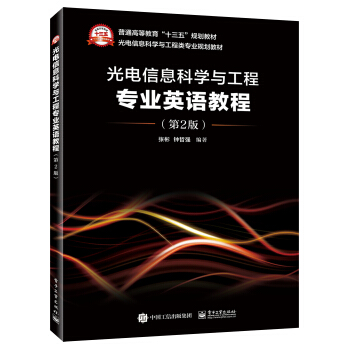- 电子工业出版社
- 9787121407734
- 1版
- 466021
- 48245591-2
- 平塑
- 16开
- 2021-03
- 276
- 机械设计制造及自动化
- 本科 研究生(硕士、EMBA、MBA、MPA、博士)
内容简介
人因工程是通过人-机-环境系统优化来达到提高系统生产率,保证人健康、安全、舒适工作的学科。本书作者集十多年从事人因工程教学科研的实践经验,根据人因工程的最新发展趋势,突出理论与实践相结合、基础与前沿相结合的原则编纂而成。 本书分为4部分(基础知识、生理人因、认知人因与人因应用)共计12章,主要内容包括人与人因、人因研究常用方法、人体测量、生理机能、疲劳与肌骨失调、职业生物力学、视觉系统、听觉系统、其它感知系统、视觉显示、压力与心理负荷、人因工程日常应用等。
目录
目 录__eol__Chapter 1 Introduction to Human Factors 1__eol__1.1 What is Human Factors 2__eol__1.1.1 Concept of Human Factors 2__eol__1.1.2 Domain of Human Factors 7__eol__1.2 Goals of Human Factors 11__eol__1.3 History of Human Factors 14__eol__1.3.1 The Origin and Development of Human Factors 14__eol__1.3.2 The Development of Human Factors in China 18__eol__1.4 Areas of Ergonomics Research and Practice 20__eol__1.4.1 Research Content 20__eol__1.4.2 Application Areas 24__eol__References 26__eol__Chapter 2 Methods in Human Factors 27__eol__2.1 Taxonomy 28__eol__2.2 Descriptive Method 30__eol__2.2.1 Scenario 30__eol__2.2.2 Variable 31__eol__2.2.3 Subjects 31__eol__2.2.4 Data Collection & Analysis 32__eol__2.3 Experimental Method 35__eol__2.3.1 Scenario 35__eol__2.3.2 Variable 36__eol__2.3.3 Subjects 37__eol__2.3.4 Data Collection & Analysis 37__eol__2.4 Evaluation Method 40__eol__2.4.1 Scenario 40__eol__2.4.2 Variable 41__eol__2.4.3 Subjects 42__eol__2.4.4 Data Collection & Analysis 42__eol__References 46__eol__Chapter 3 Anthropometry 47__eol__3.1 What is Anthropometry 48__eol__3.2 Terminology 51__eol__3.2.1 Basic Posture 51__eol__3.2.2 Measurement Plane 53__eol__3.3 How Dimensions Measured, Collected & Processed 55__eol__3.3.1 Conventional Methods 55__eol__3.3.2 Three Dimensional (3D) Anthropometry 56__eol__3.4 Applications 62__eol__3.4.1 Digital Human Modeling and Simulation 62__eol__3.4.2 Product Design for Special Population 68__eol__3.4.3 Crowd Simulation 71__eol__3.4.4 Virtual Try-on 73__eol__3.5 International Anthropometric Standards 75__eol__References 77__eol__Chapter 4 Physiology 78__eol__4.1 Structure of Muscles 79__eol__4.2 Energy Production 83__eol__4.2.1 Energy Supply 83__eol__4.2.2 Classification of Energy Metabolism 85__eol__4.3 Circulatory & Respiratory System 87__eol__4.3.1 The Circulatory System 87__eol__4.3.2 The Respiratory System 89__eol__4.3.3 The Connection between the Respiratory System and Circulatory System 91__eol__4.4 Energy Expenditure 93__eol__4.5.1 Physical Work Capacity & Energy Expenditure Limits 97__eol__4.5.2 How to Measure Energy Expenditure 97__eol__References 101__eol__Chapter 5 Fatigue & Musculoskeletal Disorders 102__eol__5.1 Definition 103__eol__5.1.1 Fatigue 103__eol__5.1.2 Musculoskeletal Disorders 107__eol__5.2 Types 108__eol__5.3 Factors 111__eol__5.3.1 Physical Factors 111__eol__5.3.2 Organizational Factors, Psychosocial Factors and Individual Factors 113__eol__5.4 Recovery 114__eol__5.5 Case Study 116__eol__References 117__eol__Chapter 6 Occupational Biomechanics 119__eol__6.1 Biomechanics & Occupational Biomechanics 120__eol__6.1.1 Biomechanics 120__eol__6.1.2 Occupational Biomechanics 122__eol__6.2 Biomechanical Models 130__eol__6.2.1 Introduction of Biomechanical Models 130__eol__6.2.2 The 2D Static Strength Model 131__eol__6.3 Low Back Biomechanics and Manual Material Handling 135__eol__6.3.1 Low Back Biomechanics and Manual Material Handling 135__eol__6.3.2 NIOSH Lifting Equation 137__eol__References 144__eol__Chapter 7 Visual System 146__eol__7.1 Light 147__eol__7.1.1 The Sources of the Light 147__eol__7.1.2 Color System 148__eol__7.1.3 The Visual Receptor System 150__eol__7.2 Illumination 154__eol__7.2.1 Measurement of Light 154__eol__7.2.2 Contrast Sensitivity 155__eol__7.3 Visual Perception 157__eol__7.3.1 Top-down vs. Bottom-up 157__eol__7.3.2 Depth Perception 158__eol__7.4 Visual Search 161__eol__7.4.1 Serial Search 161__eol__7.4.2 Parallel Search 162__eol__References 168__eol__Chapter 8 Auditory System 169__eol__8.1 Mechanics of Sound 170__eol__8.1.1 Wave, Frequency, Amplitude and Intensity 171__eol__8.1.2 Measuring the Intensity of Sound 172__eol__8.2 Structure of Human Ear 174__eol__8.2.1 The Outer Ear 174__eol__8.2.2 The Middle Ear 175__eol__8.2.3 The Inner Ear 175__eol__8.3 Perception of Sound 177__eol__8.3.1 Loudness and Pitch 177__eol__8.3.2 Sound Source Location





